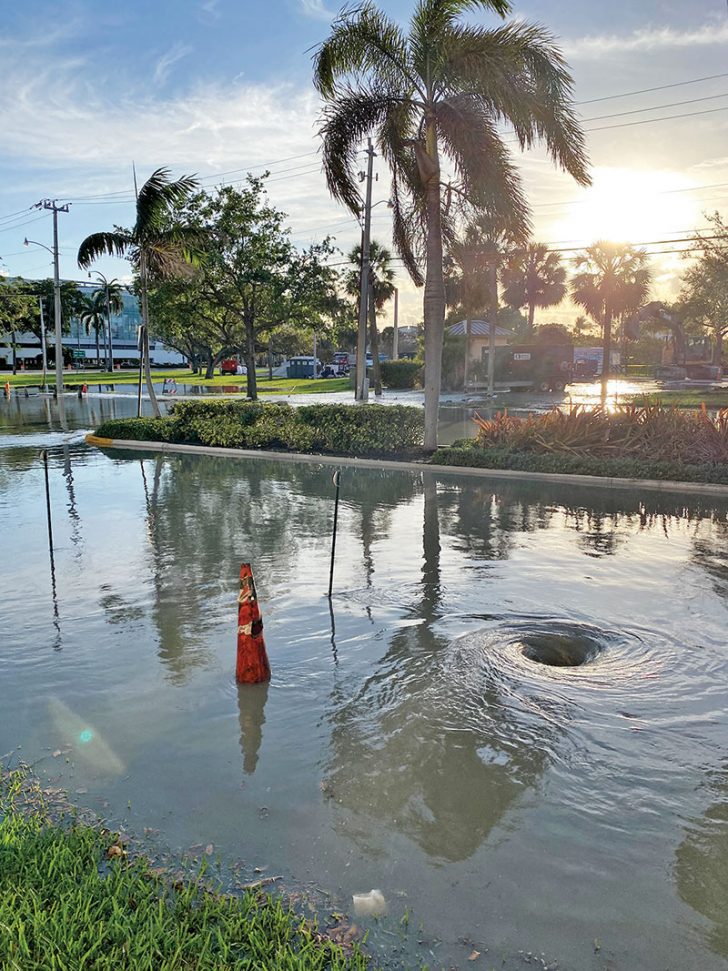
The City of Fort Lauderdale continues to work with a couple of environmental companies to assess and plan for remediation of affected areas as a result of the unprecedented sewage spills that were endured months ago. Assessments have been performed in George English Lake and the Tarpon River to determine the scope of the affected areas for future sediment and debris removal. The City is currently in the process of finishing these assessments and obtaining permitting for the work to be completed. The City has set up a page on their website to post updates and developments, which have been summarized in this article.
Based on laboratory analysis of samples collected at George English Lake, it’s been determined that the majority of debris and sediments from the break are contained within a turbidity curtain that is near the stormwater outfall on the east side of the lake. Once the City has secured all necessary permits, it estimates 30 days for this sediment removal process to be complete. As it relates to the Tarpon River, progress is being made on the waterway evaluation process to determine the area of impact from the sewer line breaks. 41 sediment core samples from 29 locations along the bottom of the River have been taken from SE 3rd Avenue to SE 9th Street. Based on the analysis of these samples, it has been determined that the area of impact from the spills is approximately 100 feet west and 600 feet east of NW 9th Avenue. A work plan is being finalized for sediment removal which also includes a permitting process. According to the City’s Tentative Restoration Schedule, this work should take approximately 30 days, and the City aims to have it completed by the end of the year.
In sum, it is imperative to recognize the progress that the City of Fort Lauderdale has made in not only beginning to overhaul key sewage infrastructure, but also working towards achieving a sustainable remediation process that starts with removing foreign sediment. This should not mark the end of the City’s attention to improving our waterways, and it is important that we continue the dialogue of clean waterways for our community so we can begin to enjoy the waters in a better state than they currently are. While there is what seems to be an insurmountable amount of work to be done, we must seek to continue developing a plan that takes a longer term approach to the health and viability of what made Fort Lauderdale famous as the Venice of the America. Just as easily as that title was given, it can be stripped if we let our environment continue to languish.
MIKE LAMBRECHTS
Vice President, CCA Florida
President – Broward County Chapter
Coastal Conservation Association Florida
501(C)(3) Non-Profit Organization
MikeLambrechts0@gmail.com
954-830-0133

